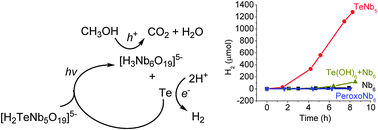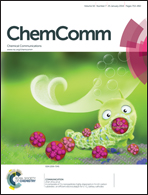A tellurium-substituted Lindqvist-type polyoxoniobate showing high H2 evolution catalyzed by tellurium nanowires via photodecomposition†
Abstract
A new tellurium-substituted Lindqvist-type polyoxoniobate [H2TeNb5O19]5− was synthesized as a tetramethylammonium salt. When irradiated with a Xe lamp, a water–methanol solution of this cluster showed exceptionally high H2-evolution activity suggesting cocatalysis by the hexaniobate cluster and metallic tellurium, both of which are formed as photodecomposition products.


 Please wait while we load your content...
Please wait while we load your content...